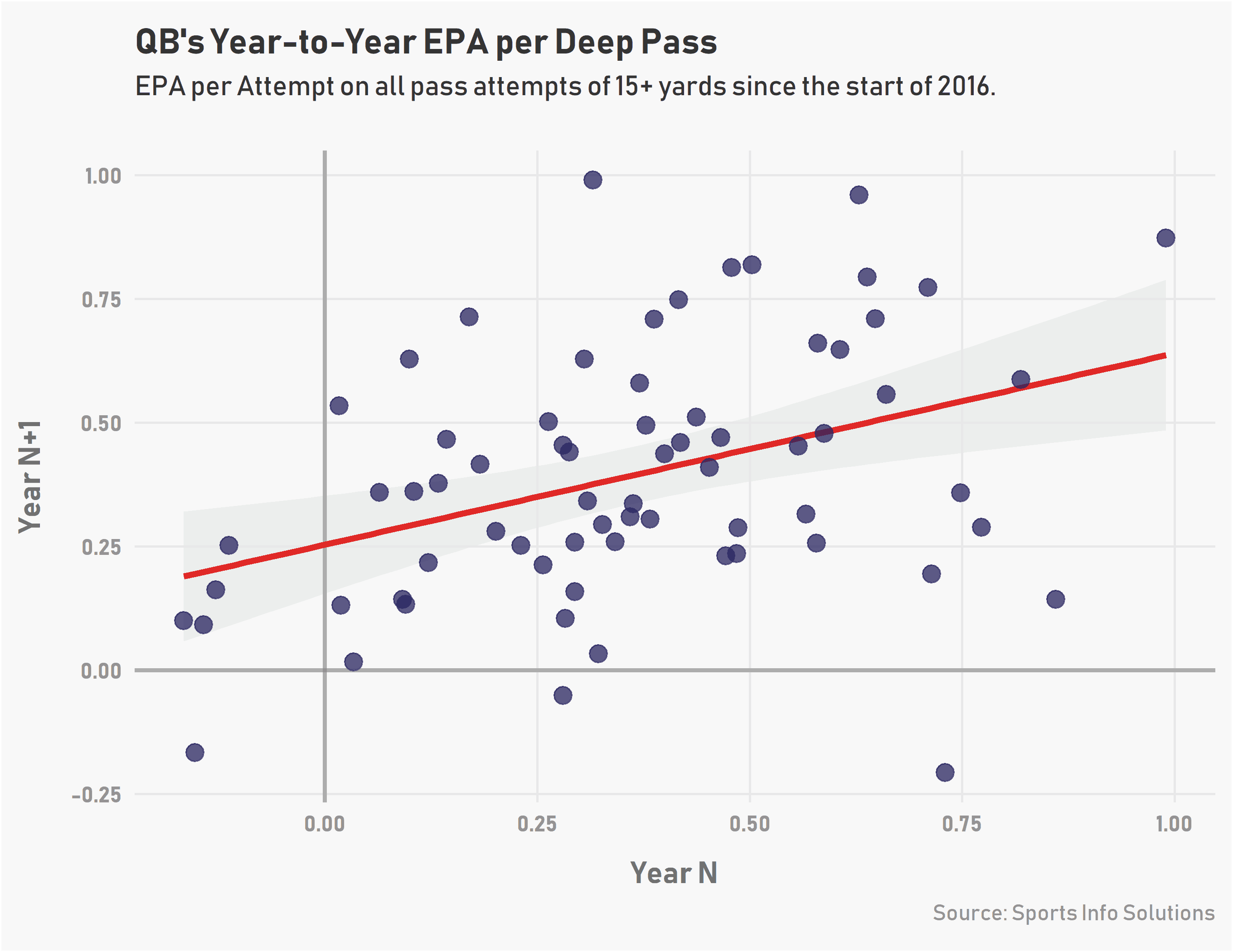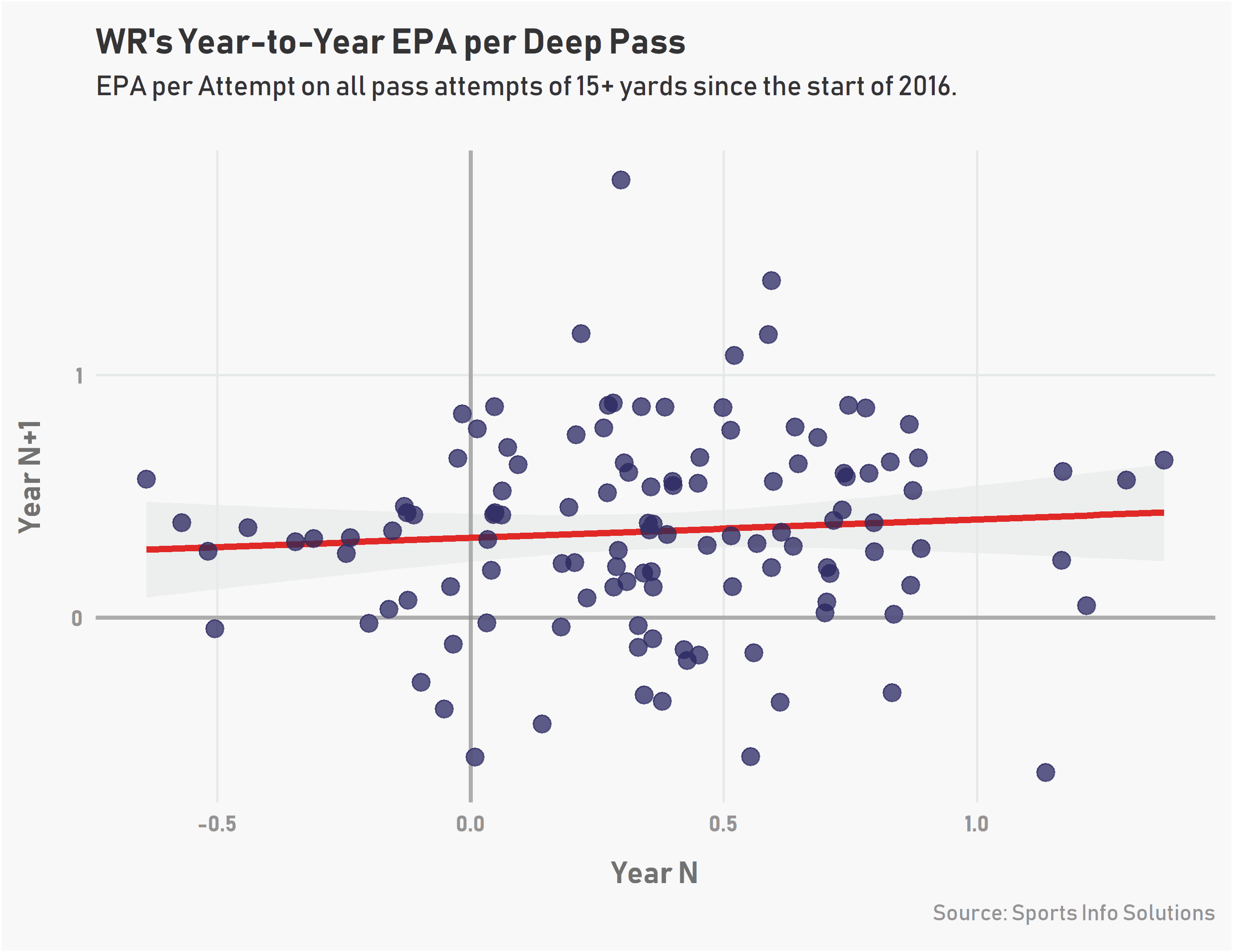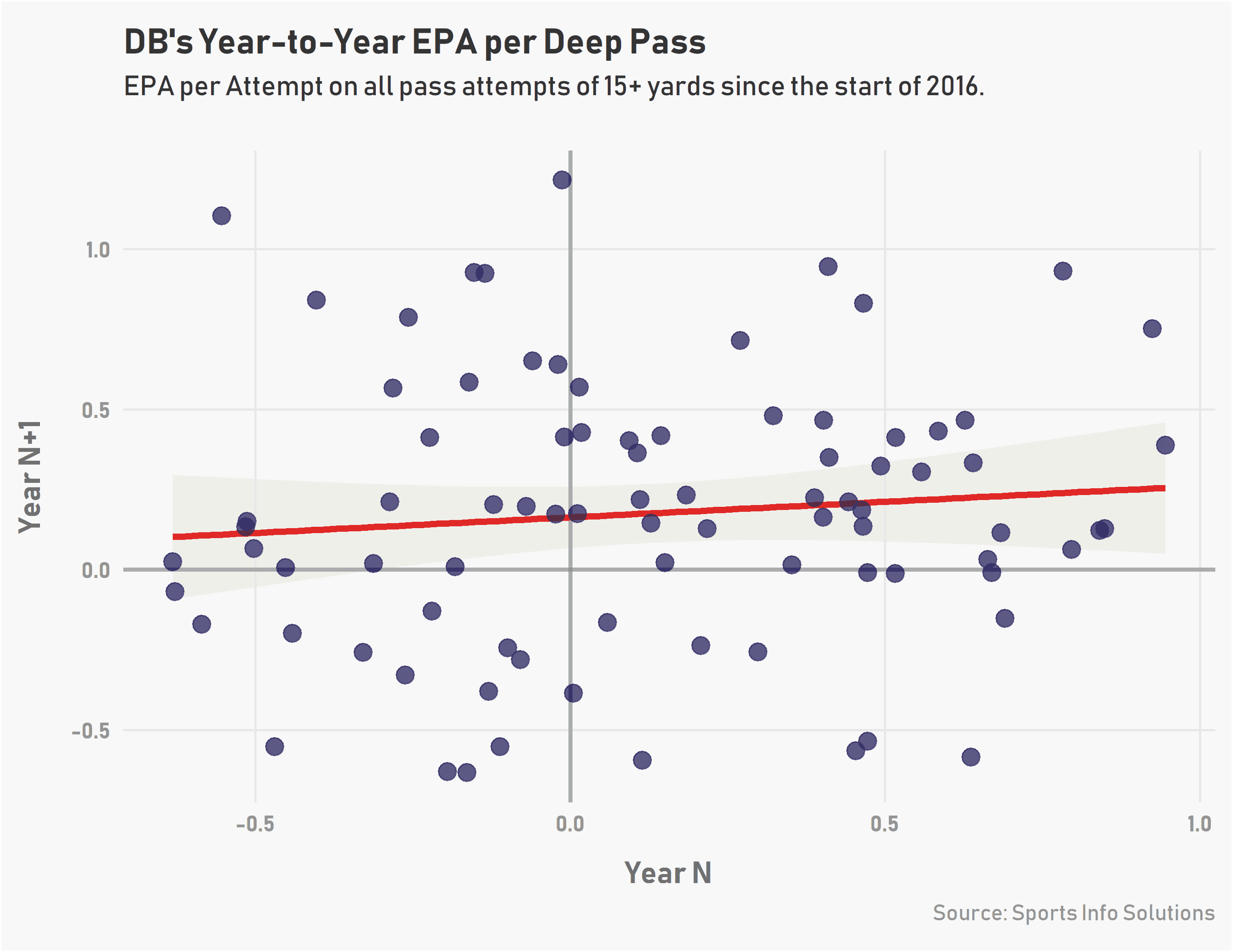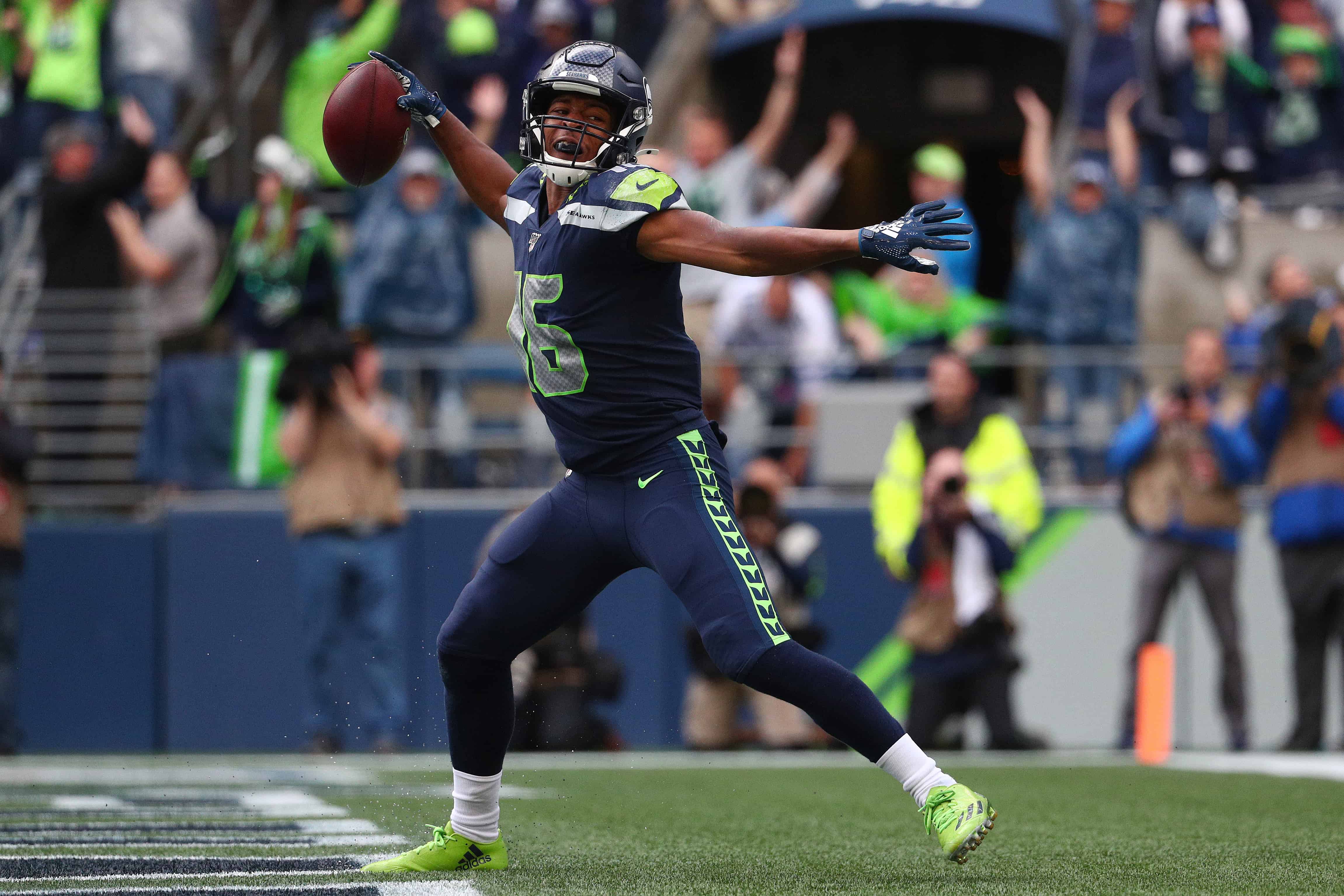A lot has been made lately of the usage and success of deep passes in the NFL. Much to the delight of fans, offenses have steadily become more aggressive and more efficient passing the ball. Watching talented quarterbacks such as Patrick Mahomes and Russell Wilson break the pocket and launch a pass deep down the field is one of the most exciting moments in sports. But, what are the most important factors that go into a successful deep passing attack? When Wilson and receiver Tyler Lockett connect on 20 out of 25 deep targets for eight touchdowns and a perfect passer rating, as they did in 2018, which player should we praise, the quarterback or the receiver?
On most pass attempts there are three individual players generally given most of the credit (or blame) for the success or failure of the play: the quarterback, the receiver, and the defensive player in coverage. The following analysis will try to answer which of these three players factors most into deep passing success, and what else enters into the equation.
Positional Factors
To answer this question we used Sports Info Solutions’ charting data and analyzed how the success of each of the three positions correlates year-to-year. Each position’s Year N EPA per Deep Pass is compared to their Year N+1 EPA per Deep Pass. This analysis will help determine how repeatable deep passing success is year-to-year for each position. If there is a high correlation between seasons, it shows a likely connection between that position and its ability to affect deep passing success on a consistent basis. To be included in the sample, quarterbacks had to have attempted at least 30 deep passes in both Year N and Year N+1, while receivers and players in coverage had to have been targeted on at least 15 deep passes in both Year N and Year N+1.

Here we see that quarterbacks have some correlation between years, with an R-squared of 0.15. This shows a quarterback’s deep passing success is a somewhat repeatable skill. Although this isn’t the strongest correlation, it shows a relationship where receivers and defensive players in coverage do not.


Here we see the ability to succeed on deep passes for receivers and players in coverage is extremely volatile year-to-year. There is basically zero correlation for both positions, with receivers having an R-squared of 0.006 and players in coverage having an R-squared of 0.009. This doesn’t mean these players aren’t important, it just reflects that they control much less than the quarterback on any given deep pass attempt. As with most passing game statistics, quarterbacks control must of what happens on the field. They can control pressures and sacks to an extent by how quickly they release the ball, and they also obviously control most of the success through the air by deciding where to throw the ball and with their passing accuracy.
Other Factors to Consider
Offensive Line Play
One of the most important factors on any pass play is the play of the offensive line. This is especially true on deep passes. Deeper targets rely on the quarterback holding the ball longer than an average pass attempt, making the offensive line’s job of protecting the quarterback exponentially harder.
Pressure% Allowed by Throw Depth
| Throw Depth | Pressure% |
|---|---|
| 0-5 | 26% |
| 6-14 | 28% |
| 15+ | 34% |
The table above shows that passes of at least 15 yards downfield result in a higher Pressure% Allowed. As Pressure% goes up, the chance of success on the pass attempt goes down. As mentioned earlier, quarterbacks can control Pressure% Allowed to an extent, which strengthens the argument they are one of the largest factors in deep passing success.
The Location of the Pass
The location of the pass on the field is another important factor to consider when measuring success. Deep passes to the middle of the field are much more likely to result in a positive play (a play that results in a positive EPA) than deep passes to the outside.
Deep Passing EPA / Att by Location
| Direction | EPA / Att | Positive% |
|---|---|---|
| Inside Numbers | 0.47 | 50% |
| Outside Numbers | 0.23 | 37% |
This increase in efficiency towards the middle of the field is likely due to the increased margin of error the offense has when not targeting the sideline. On throws to the middle of the field, quarterbacks have more room to lead the receiver and the receiver has more room to adjust to a pass that is slightly off target. This margin of error significantly decreases towards the sideline where receivers don’t have as much room to adjust, and defensive backs have less field to cover so the quarterback has to be more accurate. The average EPA on completed passes is actually higher on deep throws to the outside (2.17 compared to 2.04). But their overall efficiency is dragged down by a lower Catchable Throw%, 64% on outside throws compared to 79% inside the numbers.
Conclusion
Deep passes are some of the most exciting plays in all of sports and teams are connecting on them more efficiently now than ever. The average EPA of a pass 15 or more yards down the field has increased from 0.24 in 2017 to 0.38 in 2018 and is at an incredible 0.46 through the first five weeks of 2019.
While there are many factors to consider when dividing up the success of these pass attempts, we find, in general, the quarterback controls the most. However, this is only one way to evaluate deep passing success and further research is encouraged on the subject. This is also not a surprising finding, since it has been well established that quarterback is the most important position on the field.
But, it does provide some extra context when you see stats such as Russell Wilson’s incredible connection with Tyler Lockett on deep balls. While Lockett has proven to be an explosive weapon for the Seahawks offense, Wilson is still the one that runs the show.
















